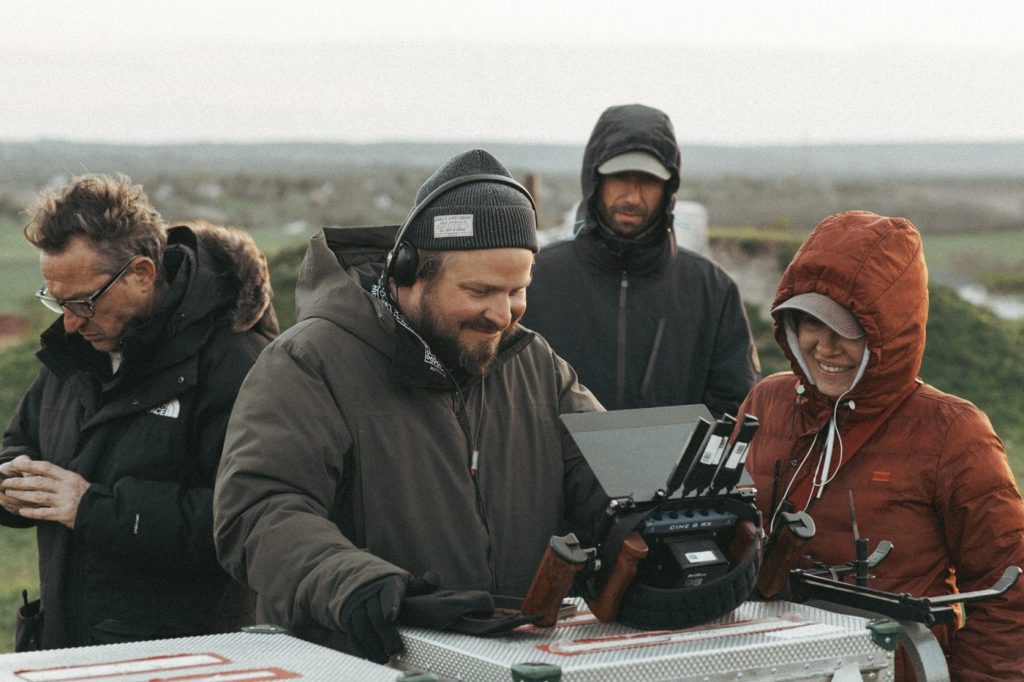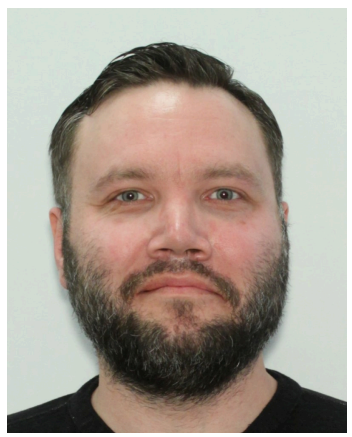Brady Corbet and ‘The Brutalist’ go for broke

Posted Dec 19, 2024 01:05:08 PM.
Last Updated Dec 19, 2024 01:15:40 PM.
NEW YORK (AP) — Brady Corbet’s “The Brutalist” emerged less like a new film worth checking out than a movie colossus to behold.
Corbet’s visionary three-and-a-half-hour postwar American epic, shot in VistaVision, has taken on the imposing aura of its architect protagonist’s style. Little about it is tailored to today’s more prescribed movie world. It even has an intermission. And yet “The Brutalist” isn’t just one of the most acclaimed films of the year, it’s edged perilously close to the mainstream.
For Corbet, the 36-year-old director, it’s a surprising turn of events. His 215-minute movie, he thought, was surely destined for cult-movie status.
“It’s a great reminder that anything can be mainstreamed,” Corbet says. “That gives me real hope for the future of the medium. Six months ago, the powers that be, many people were telling me that the film is un-distributable.”
Corbet, sitting in the offices of A24, which acquired his film out of the Venice Film Festival, smiles. “I was definitely not so popular with people as recently as August.”
Yet since its arrival at Venice in September, “The Brutalist” has emerged as a major Oscar contender. Last week, it was nominated for seven Golden Globes. Numerous critics groups have named it the best film of the year.
But Corbet and “The Brutalist” are aiming higher than awards-season success. “The Brutalist” is a grand bid to bring some visionary bravado back to movies. Corbet, who was an actor in films by Michael Haneke, Olivier Assayas and Lars von Trier before committing to directing, believes film is stuck in a stasis. In a movie world ruled by safe bets and streaming imperatives, “The Brutalist” dares to go for broke.
“I struggle a lot with movies from the last 20, 30 years,” says Corbet, who has some of the candid swagger of earlier American auteurs. “There’s many exceptions. But there aren’t as many as there should be. I just feel that they’re perfunctory — narratively perfunctory, stylistically. There are no big swings.”
“The Brutalist,” written by Corbet and his partner, the filmmaker Mona Fastvold, operatically unfolds the fictional story of László Tóth ( Adrien Brody ), a Hungarian architect who, having survived Nazi concentration camps, emigrates to Pennsylvania. He’s scraping by in a working class life when his renovation of a library for a wealthy industrialist, Harrison Lee Van Buren (Guy Pearce), propels him back into architecture. Van Buren becomes László’s benefactor, commissioning him to build a sprawling institute.
Their relationship, as patron and artist, grows increasingly tense and disturbed. “The Brutalist” evolves as a grim character study and sweeping psychodrama about the rapaciousness of American capitalism.
It’s also a pointed critique of Hollywood. For Corbet and Fastvold, some of the movie’s central dynamic came out of their previous film, ” Vox Lux,” which starred Natalie Portman as a pop star whose fame is born out of a school shooting. The swelling ranks of financiers, Corbet says, made him miserable.
“Our experience on ‘Vox’ was really, really difficult for a variety of reasons. It was much more inside the Hollywood process and that’s partially just because it was shot inside the States,” says Corbet. “After I made that film, I was like: I’m never working in the United States again. I was just being harassed by the powers that be daily. I remember at one point having a driver drive me around the block so that no one could be in my ear while I was at the monitor.”
Fastvold and Corbet, who live in New York with their 10-year-old daughter, shot “The Brutalist” in Hungary. If the movie is a self-conscious stab at resurrecting some of the visionary spirit of American moviemaking, it’s also a commentary on some of the forces that constrict it today.
“This is the closest we will ever get to making a film about making movies,” says Fastvold. “We didn’t have a Van Buren but we certainly had our fill of complicated relationships with the people who hold the purse strings.”
She adds: “In the complicated relationship between the patron and the artist, there’s this sense of: I have ownership of the project because I’m paying for it and I almost have ownership of you.”
Making “The Brutalist” wasn’t a piece of cake, either. It took some seven years in total. When Corbet, behind sunglasses, reflected on that struggle at the movie’s Venice press conference, his voice quivered with emotion. Remarkably, it was accomplished with a budget less than $10 million — considerably less than the film’s scope would suggest.
“The film was certainly designed to be outsized and imposing,” Corbet says. “We knew the film would be long. We knew it was a big object. We also felt it had to be. The form and the content needed to be lock step with each other. The appeal of Brutalism is its commitment to both minimalism and maximalism, and all of my films are playing with that dynamic. I like those extremes.”
When Fastvold and Corbet sat down to write, they resolved not to be constrained by any self-imposed limitations. They wrote big. The couple, both of whom grew up with relatives who were architects, were fascinated by the connections of Brutalism, which favors raw concrete, and the war.
“Some of these things wouldn’t exist unless they had gone through the trauma experienced during the war,” says Fastvold. “There’s an honesty in Brutalism. Instead of covering up how the building is constructed, this is showing things the way they are. That felt connected to how you handle or process trauma, by exposing it.”
For Brody, the role had obvious echoes with arguably his most defining performance. In Roman Polanski’s 2002 “The Pianist,” Brody also played a Jewish artist warped by WWII.
“The research and the immersion needed to portray someone who lived through the horrors of World War II left me with an understanding that clearly lingered and exists within me,” Brody says.
The actor grants that László is in some sense a stand-in for Corbet.
“Oh definitely. I find that filmmakers often need to exorcise their circumstances,” says Brody. “Brady is very open and unguarded as he references his own journey and hardships along the way. It’s very relatable. I understand them.”
Asked why he thinks moviemaking has grown less adventurous, Corbet describes systematic failure. It’s not only business limitations, he says, it’s a lack of boldness.
“I find this sort of faux humility to be exactly that,” Corbet says. “You made a movie. You raised millions of dollars. You assembled a crew of 250. Stop apologizing for it.”
He cites the movies of an earlier generation of filmmakers — Stanley Kubrick, Andrei Tarkovsky, Larisa Shepitko, Chantal Akerman — as films “that really demand to be wrestled with — films that announce themselves.”
“What’s funny is that I think this conservatism has been really damaging for box office as well,” Corbet says. “Audiences are so savvy that they recognize formulas being rehashed over and over again. And I would say arthouse cinema has become as algorithmic as Marvel and DC Studios.”
Corbet already sounds delighted that his next project — a ’70s-set horror Western — will further test whatever popularity has come his way thanks to “The Brutalist.”
“You have to dare to suck,” Corbet says. “I really think it’s so important. If you’re always trying to color inside the lines, you’re not advancing the conversation.”
Jake Coyle, The Associated Press








